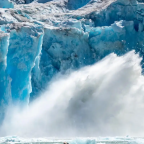
The 2,300-km Great Barrier Reef has lost more than half of its corals as a consequence of rising ocean temperatures due to global warming. The reef also suffered two mass bleaching events in 2016 and 2017. Given the damage, UNESCO’s World Heritage Committee had proposed that the Great Barrier Reef be put under ‘in danger’ category. However, the Australian government, on July 23, managed to avoid a downgrade of the Great Barrier Reef’s World Heritage status after a concerted lobbying effort by Canberra.
Now, the Australian government will have to submit an updated progress report in 2022. It is being said that Australia didn’t want the ‘in danger’ status for the Great Barrier Reef—which draws a huge tourist turnout every year—as it might affect the post-pandemic visitors.
But that doesn’t change the ground reality: Reef is now a grim region. Once teeming with vibrant corals, it has now become a lifeless washed-out wasteland.
Thus, the environmentalists call for ‘dramatic action’ to save the Great Barrier Reef.
Coral reefs and we are harming them
A 2014 study published in the journal Global Environmental Change estimated the social, cultural and economic value of coral reefs at the US $1 trillion. Despite covering less than 0.1 percent of the ocean floor, coral reefs harbour the highest biodiversity of any ecosystem globally.
Further, reefs provide protection against flooding and help the fishing and tourism industries. However, as a consequence of a global rise in temperatures, mass coral bleaching events have become more frequent.
Carbon dioxide absorbed into the ocean—due to industrialisation—impacts reef-building. Besides, increasing intensity of tropical storms and altered ocean circulation patterns also harm coral reefs.
How do degrading coral reefs impact marine ecosystems?
As stated earlier, coral reefs support biodiverse ecosystems. Thousands of marine animals – including some species of sea turtles, sea birds, starfish, fish, crabs, shrimps, jellyfish – depend on coral reefs for survival.
Coral reefs—found in over 100 countries and territories globally—also provide shelter to these species and protection from predators.
If coral reefs collapse, some of the already endangered marine species may face extinction.
What are we doing to save Australia’s coral reefs?
The International Coral Reef Initiative (ICRI), a global partnership of more than 40 governments and more than 40 civil society organizations with coral reef expertise, has dedicated resources for tracking coral reef change.
The governments have pledged to ensure that any action they authorise, fund, or carry out doesn’t degrade the condition of coral reef ecosystems.
They have also agreed to develop and use better tools, or indicators, to measure the progress of their existing goals. Additionally, studies are being funded to ascertain the causes of coral reef deterioration.
How oceans and coral reefs can help us fight climate change?
Due to climate change, tropical cyclones have intensified. However, it has been found that coral reefs have the ability to soften the ocean’s fury by reducing a wave’s energy by up to 97 percent.
A 2014 study had concluded that coral reef restoration can be a cost-effective way to “decrease the hazards coastal communities face due to the combination of storms and sea-level rise.”
Another 2018 study has found that coral reefs can potentially save countries around the world $4 billion annually in flood protections. Reefs also play a huge role in protecting coastlines.
Meanwhile, oceans provide a great way to generate green energy through ocean winds, waves, and currents. The use of alternative energy sources can reduce greenhouse gas emissions while meeting electricity demand.












Social Profiles